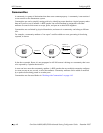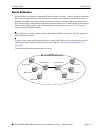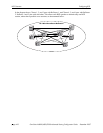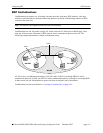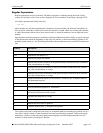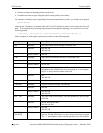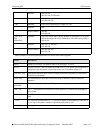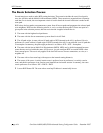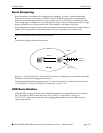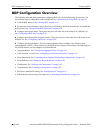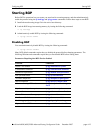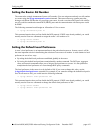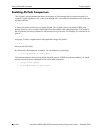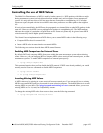
BGP Overview Configuring BGP
page 4-16 OmniSwitch 6800/6850/9000 Advanced Routing Configuration Guide December 2007
The Route Selection Process
Several metrics are used to make BGP routing decisions. These metrics include the route’s local prefer-
ence, the AS Path, and the Multi-Exit Discriminator (MED). These metrics are organized into a hierarchy
such that if a tie results, the next important criteria is used to break the tie until a decision is made for the
route path.
BGP selects the best path to an autonomous system from all known paths and propagates the selected path
to its neighbors. BGP uses the following criteria, in order, to select the best path. If routes are equal at a
given point in the selection process, then the next criterion is applied to break the tie.
1 The route with the highest local preference.
2 The route with the fewest autonomous systems listed in its AS Path.
3 The AS path origin. A route with an AS path origin of IGP (internal to the AS) is preferred. Next in
preference is a route with an AS path origin of EGP (external to the AS). Least preferred is an AS path that
is incomplete. In summary, the path origin preference is as follows: IGP < EGP < Incomplete.
4 The route with the lowest Multi-Exit Discriminator (MED). MEDs are by default compared between
routes that are received within the same AS. However, you can configure BGP to consider MED values
from external peers. This test is only applied if the local AS has two or more connections, or exits, to a
neighbor AS.
5 The route with a closer next hop (with respect to the internal routing distance).
6 The source of the route. A strictly interior route is preferred, next in preference is a strictly exterior
route, and third in preference is an exterior route learned from an interior session. In summary, the route
source preference is as follows: IGP < EBGP < IBGP.
7 Lowest BGP Router ID. The route whose next hop IP address is numerically lowest.



